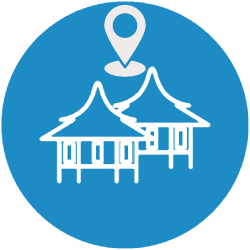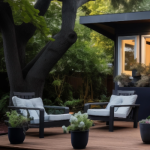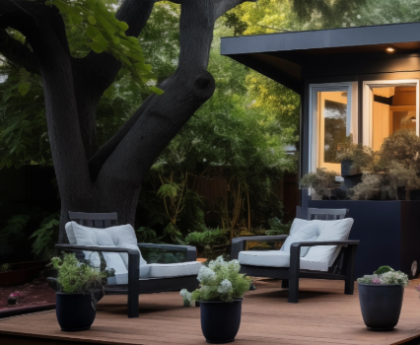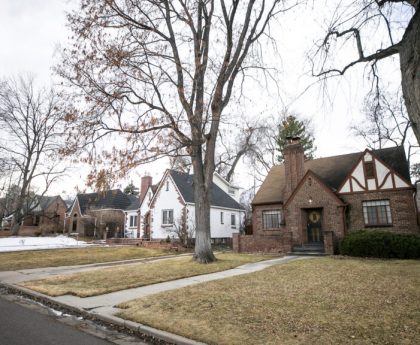The city’s “Yes to ADUs!” competition challenged local architects to design a detached ADU — sometimes called a guest cottage or in-law suite — that could easily be built in someone’s backyard. Brooklyn and Olivebridge-based DEMO Architecture was declared the winner over 25 other professional candidates, while Andrade Architecture was named runner-up and local resident Rafael Cruz received a special distinction for the best non-professional or student design.
Mayor Steve Noble, a Democrat who was elected to a third term earlier this month, calls the competition a fun way to increase awareness of ADUs — and hopefully get more of them in Kingston.
“A decade ago, there was a housing study that said we should be building thousands of units of housing in Kingston and Ulster County by 2020 – that didn’t happen,” Noble explains. “So, we here in the city of Kingston, feel that, over our next 10 years, just here in the city, we would like to build more than 1,000 new housing units.”
Like much of the Hudson Valley, Kingston is battling a housing crisis. Unlike many other municipalities, though, Kingston has actually declared an emergency.
Earlier this year, the city council overhauled its entire zoning code to, in part, encourage construction and simplify the permitting process. ADUs are now allowed citywide, and Noble says he hopes to see at least 20 new backyard units a year.
By winning the competition, DEMO will receive $25,000 to develop permit-ready construction documents that any resident can use starting next spring. Alessandro Ronfini, co-founder of DEMO, syas his 460-square-foot design, called “L’ADU,” won particularly for its privacy and energy-efficient structure. The L-shaped building includes an enclosed courtyard, a raised roof with skylights over the kitchen to provide natural light, and the option to include solar panels, which would bring the unit up to net-zero standards. Perhaps most importantly, the prototype can be rotated in any direction to maximize sunlight and fit backyards as needed.
“We didn’t know exactly where it’s gonna go, so we wanted to do something that was adaptable as much as possible, and also inviting for people to actually use it,” says Ronfini.
Ronfini says L’ADU was designed to be built without a major construction crew. He imagines a “handyman” or a homeowner with extra time and the right skills could handle most of the work on their own, with materials they can find at most big-box stores.
That said, building an ADU isn’t cheap. Designers were urged to keep their costs down to around the $125,000 mark, as the city’s Plus One Home Program is currently weighing candidates to receive up to that amount in grant funding for ADU construction. Eligible homeowners must be either at or below the median income for Ulster County, and agree to rent the ADU at an affordable rate for at least 10 years. But DEMO’s design would still require grant winners to dig into their pockets: Ronfini expects their ADU to cost nearly $140,000.
“Unfortunately, we have to deal with the reality of this area, where the costs of construction is really high, and the costs of materials are high as well,” he notes.
Looking at the housing crisis from an architect’s perspective, Ronfini says the pandemic prompted a mass exodus from New York City into the Hudson Valley that most politicians and developers probably weren’t anticipating – worsening a housing shortage that had already existed for years, and jacking up prices astronomically. He says he’s definitely seen a shift in demand from single-family homes to larger, multi-unit apartment complexes and ADUs to make up for it.
Adam Bosch, CEO of Hudson Valley Pattern for Progress, argues an increase in all types of housing will be needed to address the crisis head-on. Right now, he says there are a lot of families in apartments that, in easier times, would have been in their own homes. A recent report by Pattern found that the average single worker can no longer afford a one-bedroom apartment in any of the region’s nine counties, and median home prices are more than $100,000 higher than the mortgage a typical family would qualify for.
“The bottom line is we need to do everything we can as civic leaders to try to entice, encourage, and allow the development of more housing in the Hudson Valley — or the thing that we risk is people continuing to leave the region, people continuing to have fewer children, and our work force, our volunteer pools, our neighborhoods shrinking over time,” Bosch explains.
Noble agrees it will take a lot to move the city forward. Still, he says ADUs can play an important role. He imagines the DEMO prototype could be a great opportunity for those who want to house their adult children after college, look after elderly loved ones, or turn their backyard into an investment opportunity.
“For our residents, [this competition] saves them so much on the soft costs, which are the engineering, the architecture, and the design, and the lengthy permitting and bureaucratic process that homeowners are not really familiar with…And so, by getting this done in advance, we thought that this competition would help us spur that new housing growth, and do it in a way where we had some really creative ideas of what would be best in our Kingston backyards.”



